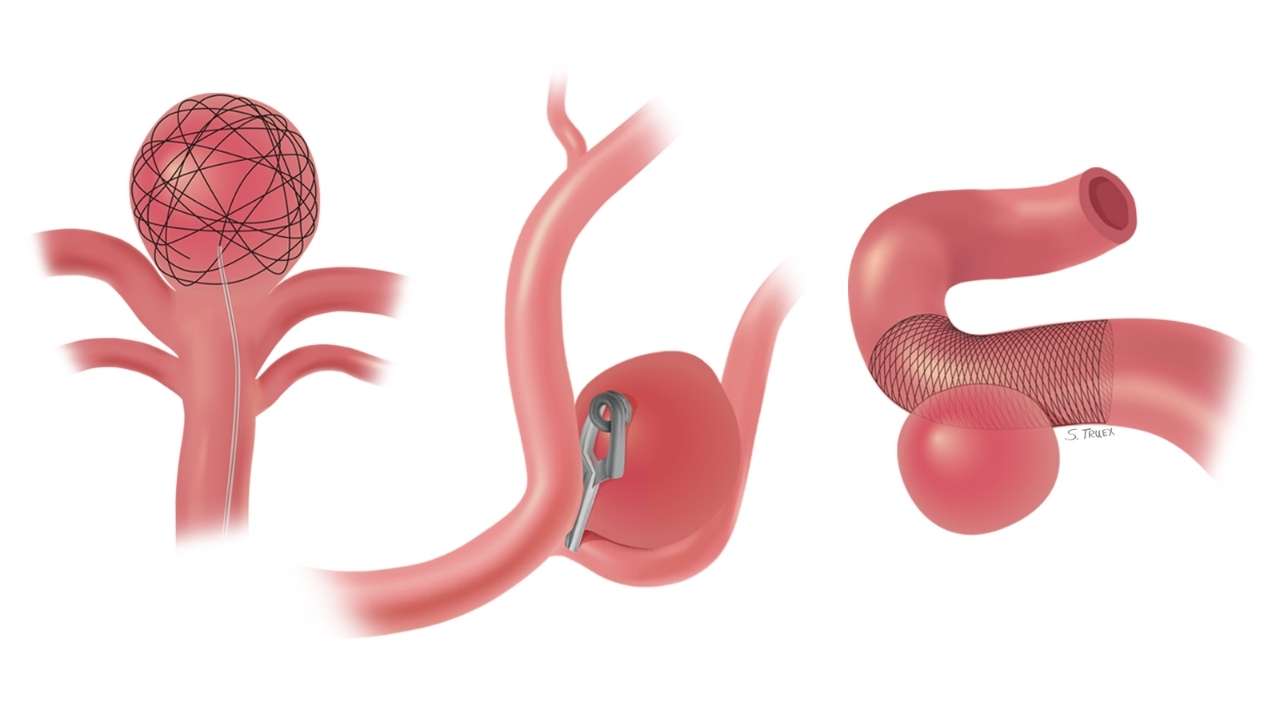Aneurysm
A bulging or ballooning in the wall of a blood artery is known as an aneurysm. The area within the artery has become weaker, and it tends to bulge outwards under normal blood pressure.
An aneurysm can have different shapes. So sometimes it’s just the part of the wall that balloons out of the side. Sometimes it’s the whole artery that begins to expand. It can occur within any of the blood vessels that lead to the brain or within the brain itself. What we worry about most with an aneurysm is that the area of the wall is weak and therefore can burst and rupture, which can cause bleed in the brain.
The most serious danger of an aneurysm is that it will burst and cause a stroke or massive bleeding, which can be life-threatening. A big aneurysm might disrupt your blood flow and cause blood clots.
It is very important to get it diagnosed and treated as soon as possible. Aneurysms often have very mild symptoms or no symptoms, so regular checkups can help your doctor to check warning signs.
Types of Aneurysms
There are three types of aneurysms that are classified by their location in the body.

Aortic Aneurysms
The aorta is a large artery that originates at the heart’s left ventricle and passes through the chest and abdomen. The aorta’s usual diameter is between 2 and 3 centimeters (cm), but an aneurysm can cause it to bulge to more than 5 cm.

Cerebral Aneurysm
They’re also known as “berry” aneurysms because of their shape. Cerebral aneurysms occur in the wall of the blood vessels present in the brain. These types of aneurysms are caused due to smoking.

Thoracic aortic aneurysm
A thoracic aortic aneurysm is a bulging or ballooning of the aorta that runs through the chest and down to the diaphragm. Atherosclerosis, or artery hardening, is a common cause.
Cause of Aneurysms
Any condition that causes your artery walls to weaken. Atherosclerosis and high blood pressure are the most common causes. Aneurysms can also be caused by deep wounds and infections. It’s also possible that you were born with a weakening in one of your artery walls.
Treatment of Aneurysms
An aneurysm can be treated depending on its size, type, and location. For inoperable aneurysms, doctors may prescribe medications to lower blood pressure or reduce the force of the heartbeat. So that chances of it bursting will be reduced.
For an operable aneurysm, your doctor may first try medication and a wait-and-see approach, with periodic tests to track its growth.
It can also become a medical emergency. In some cases of aneurysms, there is a need for surgery to strengthen the artery wall. When the aneurysm has ballooned out the side of the blood vessel, a clip and coiling process is used to close that area.
Prevention
Aneurysms can’t always be prevented because some are congenital, meaning they’re there from birth. Some lifestyle decisions, however, can reduce the risk:
No Smoking
Smoking increases the risk of aortic aneurysms and aneurysm rupture anywhere in the body. So, quitting smoking can lower the chance of a severe aneurysm.
Managing Blood Pressure
The risk of aneurysms can be reduced by controlling blood pressure. Dietary changes, regular exercise, and medication help in maintaining healthy blood pressure.
Take a Healthy Diet
A healthy diet can also help to lower cholesterol and the risk of atherosclerosis. Atherosclerosis is frequently connected to fusiform aneurysms.
Anyone who has been diagnosed with an aneurysm and is being treated conservatively can work with a healthcare practitioner to address any risk factors.




